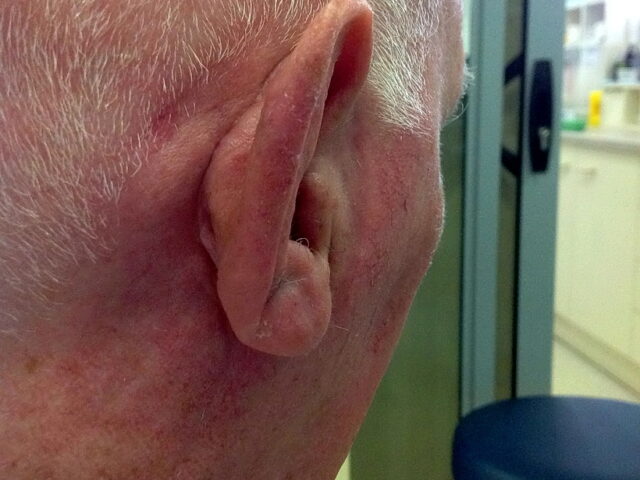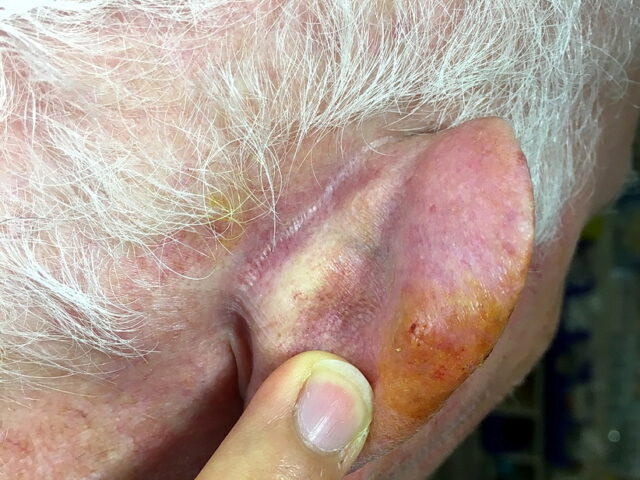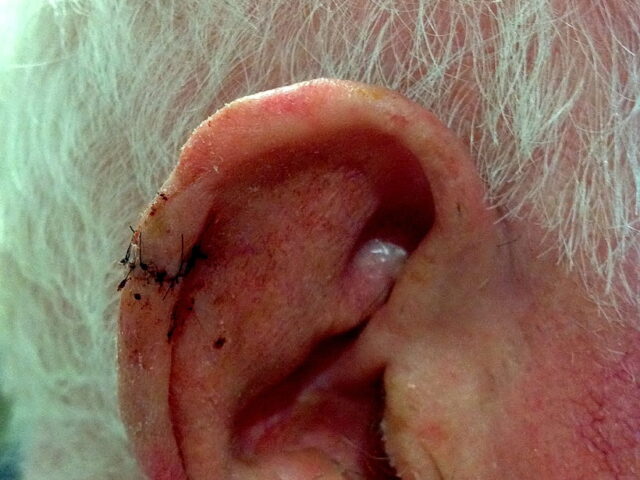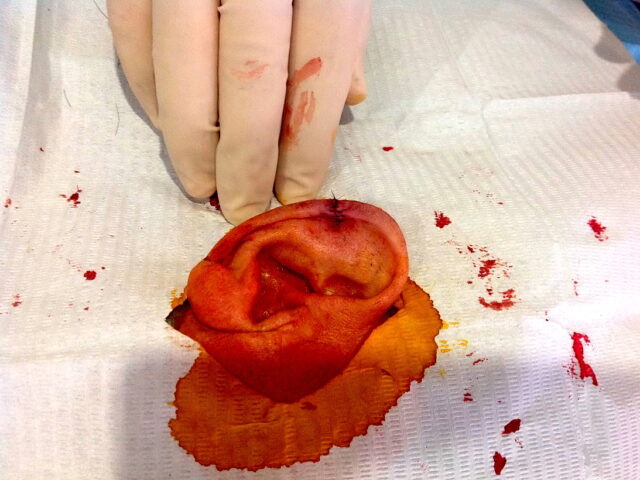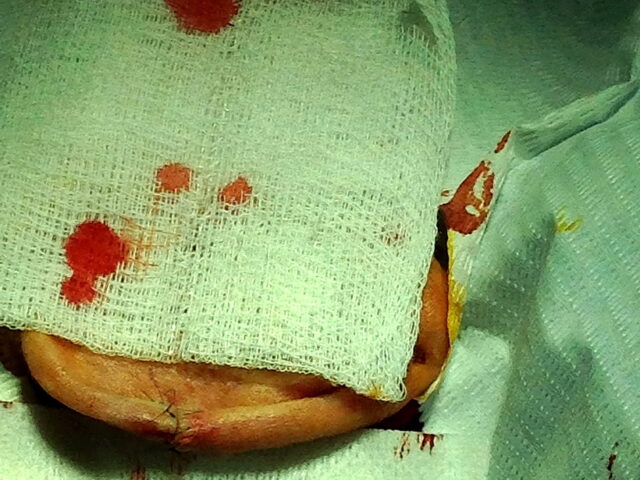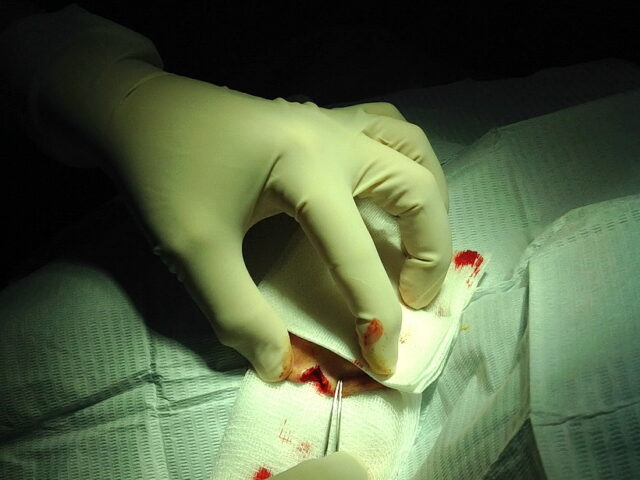Skin Cancer Surgery
Surgery (Excision Biopsy) is the most common and effective treatment for skin cancer.
An excision biopsy is a procedure where Dr.P.Urosevic surgically removes a small area of abnormal tissue or a suspicious-looking spot from your body. This is done to get a closer look at the tissue and find out what it is.
First, the area is numbed with local anesthesia so you won’t feel any pain during the procedure. Then, Dr.P.Urosevic carefully cuts out the abnormal tissue along with a small amount of normal tissue around it.
The removed tissue is then sent to a laboratory for analysis by a pathologist, who examines it under a microscope to determine if there are any abnormal cells or signs of disease. The results of the biopsy help Dr.P.Urosevic make an accurate diagnosis and decide on the most appropriate treatment, if needed.
Please Note:
- All surgeries require a face-to-face consultation with Dr. P. Urosevic.
- You must acknowledge the surgery plan.
- Patients must acknowledge that skin surgery is not bulk billed and understand the out-of-pocket fee associated with the surgery.
- Patients must acknowledge that a cancellation fee will be incurred for surgeries canceled less than 24 hours in advance.
- All patients are required to sign a consent form before a surgical procedure
- Since it is performed under local anesthesia, you can typically return home on the same day. You are safe to drive yourself home after the surgery.
- Patients must acknowledge the need to stop taking blood thinners, fish oil, or other supplements containing omega-3 prior to surgery.
It is advisable to discuss this with your GP or healthcare provider, especially if you are taking blood thinners for any medical condition.

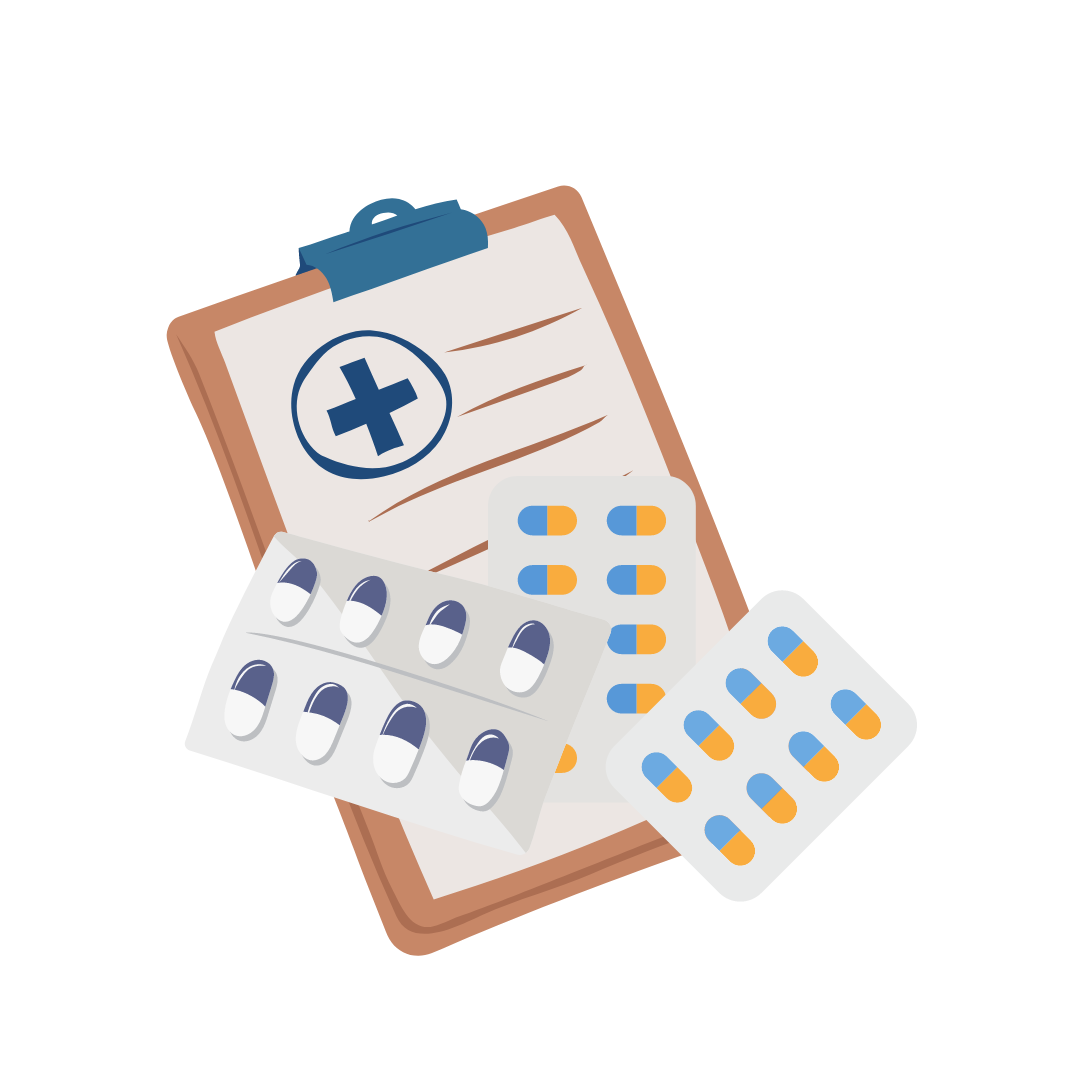


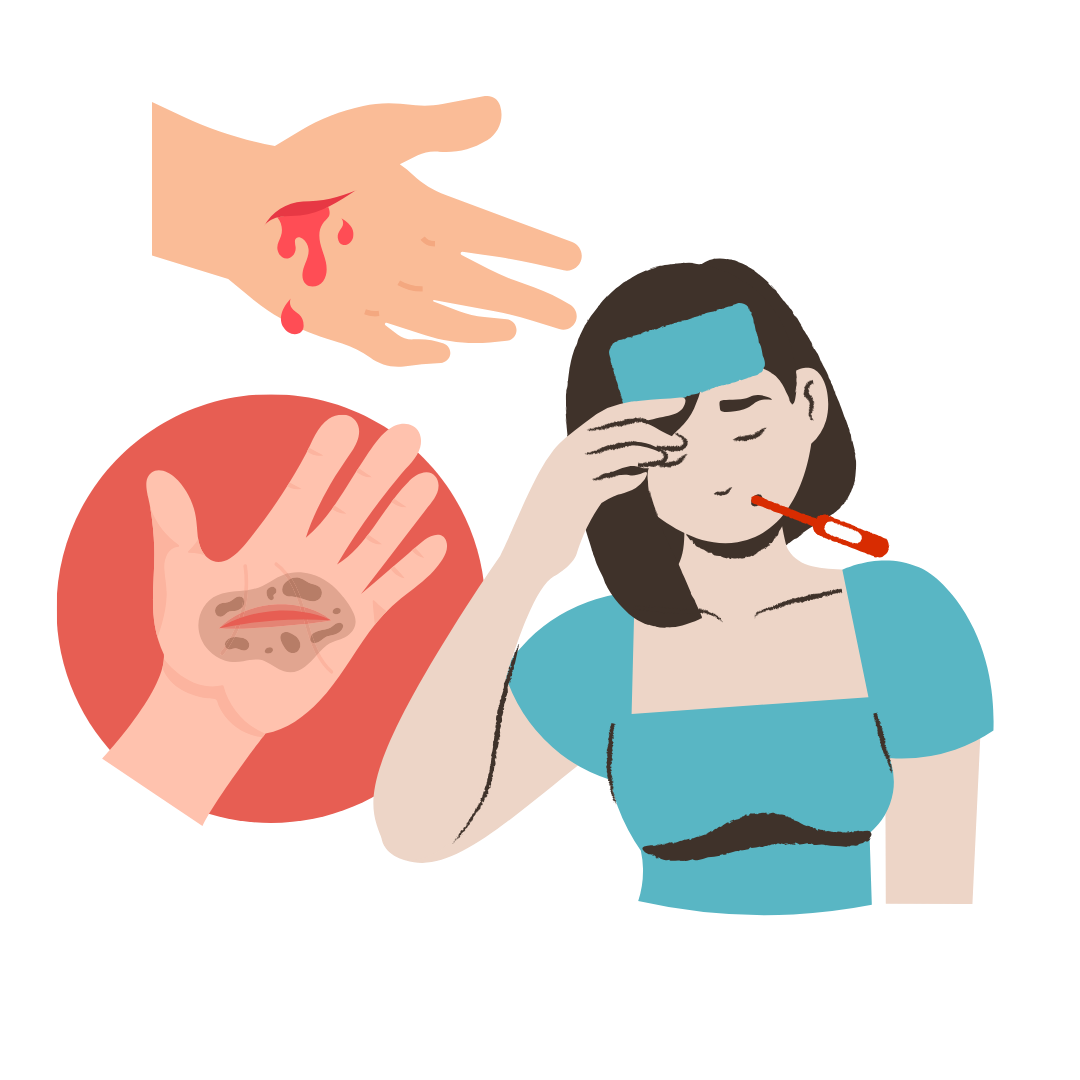

Wound Care:
- DO NOT remove the waterproof plaster until your follow – up appointment.
- Avoid soaking the wound in water, such as during prolonged baths or swimming.
- If actively bleeding, apply firm pressure for 15mins without lifting, if continues, notify our office 3172 6130
Medication:
- Take Paracetamol extra for pain management if necessary
- Take the Antibiotic as prescribed by Dr Predrag
- DO NOT take aspirin or non-steroidal anti-inflammatory drugs (NSAIDs) as they increased the risk of bleeding.
What to Avoid:
- First 2 days following surgery: NO smoking, ingestion of alcohol, no aspirin (unless prescribed)
- No swimming in ponds, pools, or lakes/ocean while sutures are in
- No heavy lifting (over 10lbs) or workout exercises
- No jogging, running, speed walking, free-weight lifting, tennis, racquet ball, aerobics, golf, bowling
Suture Removal:
- Your stitches are typically scheduled to be removed within 14 days
- If your stitches are dissolvable, they will disappear on their own. If not, the removal process is usually quick and relatively painless.
- DO NOT attempt to remove the stitches yourself; this should be done by nurse during a follow-up appointment.
Signs of Infection:
- Watch for signs of infection, including increased redness, swelling, warmth, or discharge from the wound. If you notice any of these signs, contact us at 3172 6130
Follow-Up Appointment:
- Wound Review (within 5 days)
- Stitches Removal + Histology Result (within 14 days, Dr Predrag will advised during wound review follow-up appointment)
Following these post-excision care instructions can help promote proper healing and reduce the risk of complications after the biopsy. If you have any specific concerns or questions, don’t hesitate to reach out to your healthcare provider for assistance.
Skin Grafts and Skin Flaps
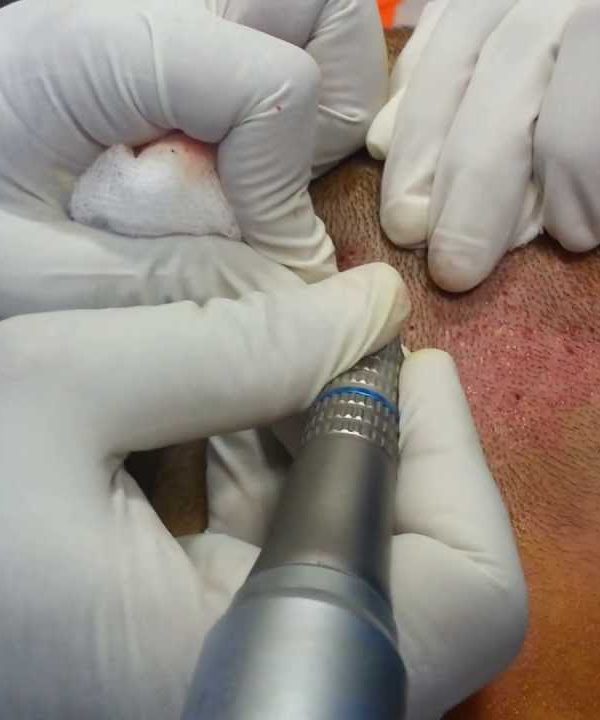
If the skin growth is large or spreading, a larger area of skin may need to be removed and you may need a skin graft or a skin flap to cover the wound.
Skin grafts and flaps are layers of skin taken from another part of the body and placed over the area where the skin cancer has been removed.
Skin Graft
The surgeon will take a layer of skin from another part of the body (the donor site). The inner thigh is a common place to take the skin from. It’s then put over the area where the cancer has been removed.
A skin graft for the face will usually be taken from behind the ear or the neck area in order to get a good skin colour match.
Skin Flap
A skin flap is a slightly thicker layer of skin which is taken from an area very close to the wound where the cancer has been removed.
The flap is cut away but left partly connected so it still has a blood supply. It’s moved over the wound and stitched in place.
You may also have some stitches around the donor site.
Please note that all patients are required to sign a consent form before a surgical procedure is performed.

